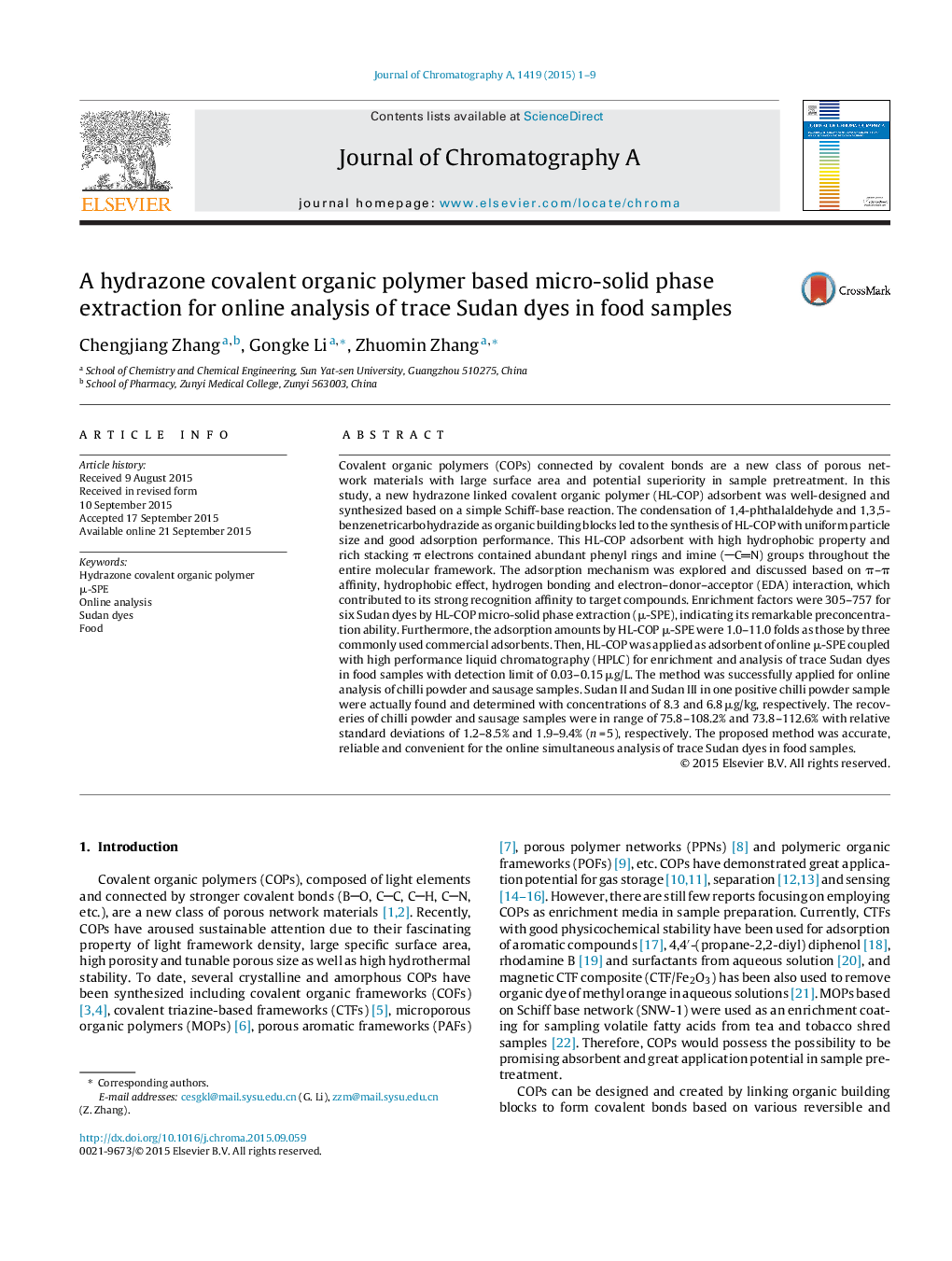| کد مقاله | کد نشریه | سال انتشار | مقاله انگلیسی | نسخه تمام متن |
|---|---|---|---|---|
| 1198745 | 1493507 | 2015 | 9 صفحه PDF | دانلود رایگان |
• Preparation of new hydrazone linked covalent organic polymer by Schiff-base reaction.
• The adsorption mechanism of the HL-COP adsorbent was explored in detail.
• An online HL-COP μ-SPE method coupled with HPLC for analysis of Sudan dyes.
• Practical application for online analysis of trace Sudan dyes in food samples.
Covalent organic polymers (COPs) connected by covalent bonds are a new class of porous network materials with large surface area and potential superiority in sample pretreatment. In this study, a new hydrazone linked covalent organic polymer (HL-COP) adsorbent was well-designed and synthesized based on a simple Schiff-base reaction. The condensation of 1,4-phthalaldehyde and 1,3,5-benzenetricarbohydrazide as organic building blocks led to the synthesis of HL-COP with uniform particle size and good adsorption performance. This HL-COP adsorbent with high hydrophobic property and rich stacking π electrons contained abundant phenyl rings and imine (CN) groups throughout the entire molecular framework. The adsorption mechanism was explored and discussed based on π–π affinity, hydrophobic effect, hydrogen bonding and electron–donor–acceptor (EDA) interaction, which contributed to its strong recognition affinity to target compounds. Enrichment factors were 305–757 for six Sudan dyes by HL-COP micro-solid phase extraction (μ-SPE), indicating its remarkable preconcentration ability. Furthermore, the adsorption amounts by HL-COP μ-SPE were 1.0–11.0 folds as those by three commonly used commercial adsorbents. Then, HL-COP was applied as adsorbent of online μ-SPE coupled with high performance liquid chromatography (HPLC) for enrichment and analysis of trace Sudan dyes in food samples with detection limit of 0.03–0.15 μg/L. The method was successfully applied for online analysis of chilli powder and sausage samples. Sudan II and Sudan III in one positive chilli powder sample were actually found and determined with concentrations of 8.3 and 6.8 μg/kg, respectively. The recoveries of chilli powder and sausage samples were in range of 75.8–108.2% and 73.8–112.6% with relative standard deviations of 1.2–8.5% and 1.9–9.4% (n = 5), respectively. The proposed method was accurate, reliable and convenient for the online simultaneous analysis of trace Sudan dyes in food samples.
Journal: Journal of Chromatography A - Volume 1419, 6 November 2015, Pages 1–9
